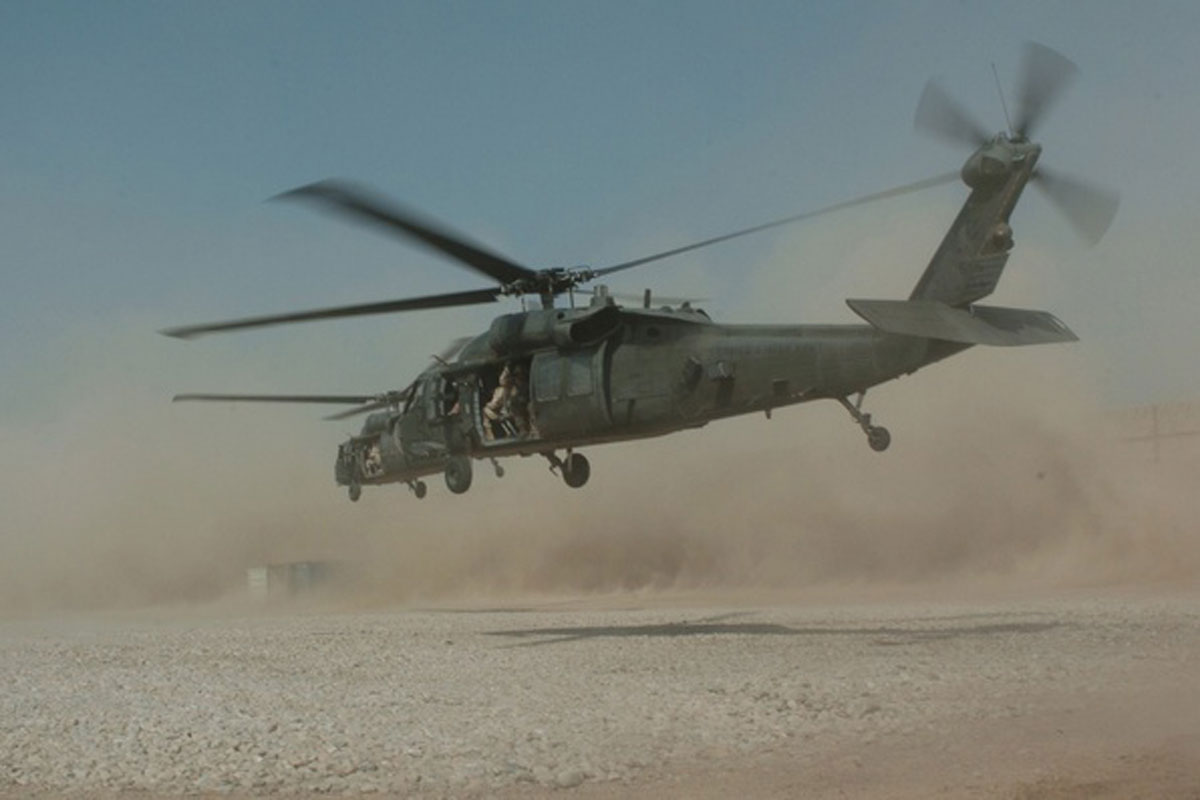Safety First: Critical Steps in UH 60 Helicopter Upkeep
Safety First: Critical Steps in UH 60 Helicopter Upkeep
Blog Article
Understanding the Mechanics and Engineering Behind Uh 60 Helicopters
The UH-60 helicopter, generally understood as the Black Hawk, stands as a pinnacle of modern-day rotorcraft innovation, symbolizing a blend of durable engineering and complex auto mechanics. As we peel off back the layers of the UH-60's style, a world of complex systems and thorough engineering comes to light.
Background of UH-60 Helicopters
The background of UH-60 helicopters traces back to the late 1970s when the United States Army looked for a advanced and functional energy helicopter to change its aging fleet. In reaction to this requirement, the Sikorsky Airplane Company established the UH-60 Black Hawk helicopter. Presented in 1979, the UH-60 quickly came to be a staple in army operations as a result of its outstanding capabilities.
The UH-60 was created to succeed in a range of goals, including troop transportation, clinical evacuation, electronic warfare, and special operations. Its capability to adjust to various roles made it a beneficial possession to the united state Military and various other military forces around the globe
Throughout the years, the UH-60 system has undertaken a number of upgrades and variants to improve its efficiency and equal evolving goal needs. These helicopters have actually seen substantial service in conflicts such as the Gulf War, Afghanistan, and Iraq, showcasing their integrity and versatility in diverse operational environments. The UH-60's rich background is a testimony to its enduring tradition as a top utility helicopter.

Engine and Power Systems
Utilizing sophisticated propulsion technology, UH-60 helicopters are geared up with innovative engine and power systems to ensure ideal efficiency and dependability in a series of operational circumstances. The UH-60, generally understood as the Black Hawk, is powered by 2 General Electric T700-GE-701D engines, each qualified of providing up to 1,940 shaft horse power. These turboshaft engines give the necessary drive for the helicopter to accomplish its missions successfully, consisting of troop transportation, medical emptying, and combat assistance.

Rotor System and The Rules Of Aerodynamics
Just how do the blades system and aerodynamics of UH-60 helicopters add to their functional performance and trip capacities? The rotor system of the UH-60 helicopter plays a vital role in supplying lift and propulsion. The UH-60 includes a four-bladed, totally verbalized rotor system that enables high maneuverability and stability throughout trip. This design This Site allows the helicopter to perform a broad range of missions, from transport and clinical evacuation to combat operations.
The rules of aerodynamics likewise play an essential duty in the performance of UH-60 helicopters. The structured body and rotor blade design lower drag, permitting the helicopter to attain higher speeds and far better gas efficiency. The wind resistant design of the UH-60 also contributes to its ability to run in varied ecological conditions, consisting of warm temperature levels and high altitudes.
Avionics and Trip Control Solution

In its detailed coordination with the rotor system and the rules of aerodynamics of UH-60 helicopters, the avionics and trip control systems develop a vital network of modern technologies forming the airplane's functional capabilities. Avionics encompass the electronic systems utilized for communication, navigating, and keeping track of various aircraft features. In the UH-60, these systems include digital screens, communication radios, general practitioner navigation, weather condition radar, and auto-pilot systems. These avionics systems provide important details to internet the pilots, enhancing situational awareness and ensuring efficient and safe procedure of the helicopter.
The flight control systems of the UH-60 are liable for translating the pilot's inputs into the appropriate adjustments to the rotor system, making sure stable flight and maneuverability. These systems are composed of hydraulic actuators, servos, and computers that interact to manage the tail and major rotors, in addition to various other flight control surfaces. By specifically managing the helicopter's trip dynamics, these systems allow pilots to do a variety of objectives, from transportation and search-and-rescue to useful source battle operations, with accuracy and self-confidence.
Duty and Applications in Aeronautics
Avionics systems in UH-60 helicopters include a range of electronic systems that aid in navigating, communication, surveillance, and managing various airplane functions. These systems consist of electronic displays, auto-pilot systems, communication radios, General practitioner navigating equipment, and weather radar. Furthermore, these systems include safety and security functions such as auto-pilot settings, terrain recognition warning systems, and security augmentation systems to boost the general security and functional abilities of the UH-60 helicopters in different missions, consisting of army transport, clinical emptying, search and rescue, and aerial firefighting.
Verdict
In final thought, the UH-60 helicopter is a flexible aircraft with a rich background and progressed design. Its engine and power systems, rotor system, the rules of aerodynamics, avionics, and trip control systems all work together to make it a trusted and reliable device.
In its intricate coordination with the rotor system and aerodynamics of UH-60 helicopters, the avionics and trip control systems develop an essential network of modern technologies forming the airplane's operational capacities.The flight control systems of the UH-60 are responsible for converting the pilot's inputs right into the ideal adjustments to the rotor system, ensuring steady flight and maneuverability. Avionics systems in UH-60 helicopters include a variety of digital systems that help in navigation, communication, monitoring, and managing different aircraft features. Additionally, these systems incorporate security attributes such as auto-pilot modes, surface awareness cautioning systems, and security augmentation systems to improve the total safety and security and operational abilities of the UH-60 helicopters in various objectives, including army transport, clinical emptying, search and rescue, and airborne firefighting.
Its engine and power systems, blades system, the rules of aerodynamics, avionics, and flight control systems all function with each other to make it a reliable and effective device.
Report this page